BAE Systems has highlighted strong operational progress in its 2024 full-year update, with significant milestones achieved in its frigate programmes.
The company continues to deliver on major naval contracts, including the Type 26 programme for the Royal Navy and the Hunter-class frigates for Australia, reinforcing its leadership in global shipbuilding.
The company reported a 12% increase in maritime sales, reaching £6.2 billion in 2024 compared to £5.5 billion in 2023. This growth was primarily driven by the ramp-up of the Hunter-class programme in Australia and ongoing design work for SSN-AUKUS, the UK’s next-generation attack submarine project.
BAE Systems confirmed that HMS Glasgow, the first Type 26 frigate, is progressing through final outfitting, testing, and commissioning, ahead of its first sea trials. Meanwhile, HMS Cardiff, the second ship in the class, entered the water in August 2024 and has since moved to Scotstoun shipyard for further outfitting. Unit construction continues on HMS Belfast and HMS Birmingham, while HMS Sheffield, the fifth ship, began construction in November.
Chief Executive Charles Woodburn praised the company’s record-breaking order backlog, which has grown to £77.8 billion, including £3 billion from the recent acquisition of Ball Aerospace. He noted that BAE Systems is investing in facilities, technology, and workforce expansion to maintain its leading role in the defence sector, stating:
“We’re supporting our customers around the world while shaping our portfolio towards higher growth and strategically important markets. Based on the exceptional visibility of our record order backlog, we remain confident in the positive momentum of our business into the future.”
Financially, BAE Systems reported £26.3 billion in revenue, up 14% from £23.1 billion in 2023, with operating profit rising to £2.7 billion. The company also saw a 10% increase in dividends per share to 33p, reflecting continued confidence in long-term growth.
The Type 26 frigate programme remains a flagship project, ensuring the Royal Navy receives cutting-edge warships to enhance global maritime security, while the Hunter-class initiative strengthens BAE’s footprint in the Australian defence sector.


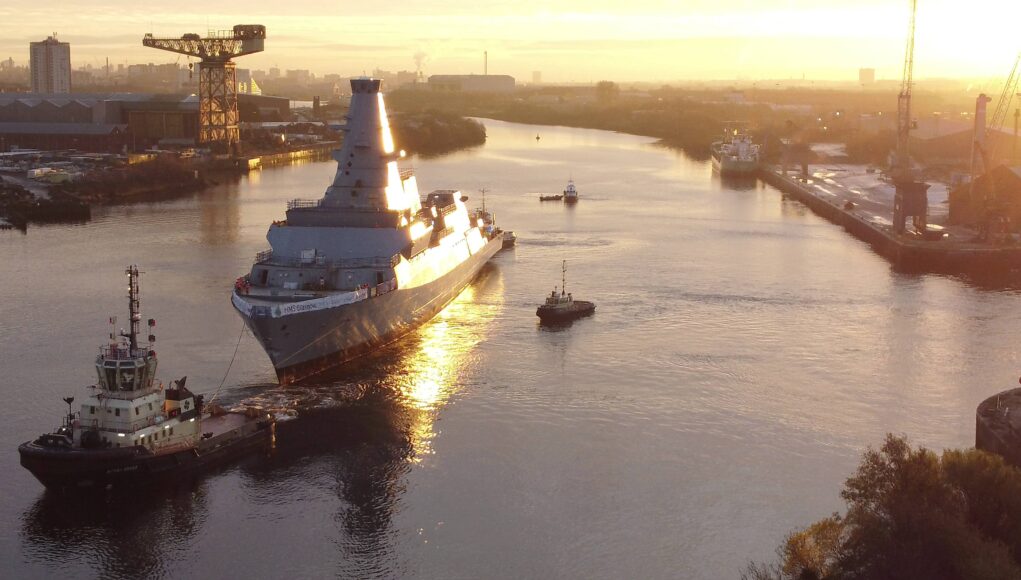
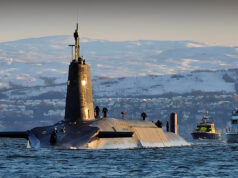

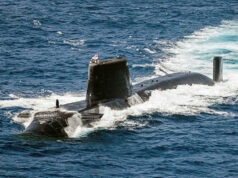

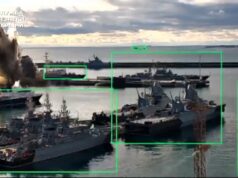

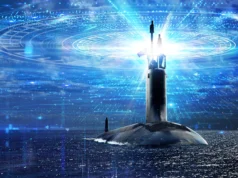

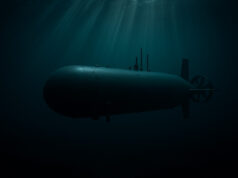


Oh dear. I was momentarily caught by the click-bait headline and the pretty picture into believing the ship was leaving Glasgow as we speak. So disappointing to read in the article the current situation, which shouldn’t have been disappointing at all.
Me too… If there is any way Bae can speed up batch two we should get on with it.
They’ve already announced a significant speed up of the second batch. I think we’ll have to wait to see what goes on with the Norwegian requirement before we get any more.
Is it BAE or MoD/Treasury that’s at fault, here?
I’d bet money that they could have a Type 26 in the water and either on sea trials or entering service within 18 months of the first steel being cut, if the MoD paid the money for it (which would obviously need more from HMT).
I think it was largely the treasury drip-feeding funding, slowing down the build so they didn’t spend too much each financial year. Thanks to that, we have aged T23s being scrapped before replacements are ready, further reducing the tiny escort force at a tie when we urgently need conventional forces in the face of aggresive Russia/China et al.
This is the problem.
Because budgets are so tight, MoD staff stretch out build times, only worrying about *this year’s* budget and never actually considering that doing so actually increases overall costs, often resulting in overall numbers declining.
There is a degree of sense in keeping the gapping between #1 -> #3 and then accelerating.
You work out the bugs in those three, particularly #1 and then build perfect #4 onwards.
If you build all eight fast you end up with the errors and defects in the first ones in all eight.
For the eleven years expected from steel cut to operations for a first ship, I’d say we can compare them to the seven years for HMS Norfolk (the first Type 23) and ask where did the extra four years creep in?
Norfolk took five years from laying down to delivery and two years working up to fully operational. It’s expected Glasgow will take 9 years to delievery and two more years to fully operational. So I’m going to let the Royal Navy off the hook completely. The government ordered it to be slow, but wanted it delivered in eight years rather than nine. So I’ll blame around three years delay on the government and one year on Covid/industry.
Of course it’s more complicated. BAE pointed the finger at David Brown Santasalo for not being able to deliver the gearboxes on time, but I’m not buying that, nor am I buying the it’s all Covid’s fault either. It’s complicated, so let’s just leave it as the extra year was a mixture of things related to Covid and industry.
The final ship is only expected to take as long as Norfolk to build, which suggests that some regeneration work was needed at Govan/Scotstoun because of previous government neglect, something that Yarrow (Scotstoun) didn’t have to contend with in the 1980s, having rolled on from building the Type 22s. However, I don’t think that affected the speed of Glasgow’s build which really was cash limited.
Firstly comparing the T26 build to a T23 just isn’t like for like due to size and complexity, but if you compare it to the T45 it would be a better fit. Funnily enough if you read the comments by BAe CEO about the B2 build schedule the T26 schedule compares very well to the T45.
Re the David Brown Santasalo issue, yes the Gearbox for Glasgow was delayed but for very good and sensible reasons. The Gearbox on the T26 is cutting edge as it’s designed for ASW so not only has it got to handle the power of the MT30 but be very quiet and it has to be right from day 1.
You are probably aware of the issues with the USN LCS1 and German K130 ships both were down to the Gearboxes failing in use and delayed the delivery and cost a fortune to rectify post build.
Due to the above reasons the decision was taken to order the gearboxes very early in the process as long lead items and to carry out a full series of land based tests on a purpose built test rig before delivering them to BAe. Which was a sensible way to de risk any issues after they were installed, just remember these are fitted right down in the depths of the hull so not easily accessible.
An issue with vibration was encountered when full power was applied so the delivery was delayed and BAe did what all good engineers do, they whinged about, swore a bit, scratched their heads and then mitigated as much of any delay by doing a work round.
Quite simply they modified the outfit schedule into the hull and left a clear route so it could be fitted later, meanwhile get on with the rest.
Turns out it was all down to a resonance issue within the Test Rig Structure itself and nothing to do with the Gearbox, so all good to go ! But finding that takes time.
IMHO doing that test was very prudent and bearing in mind the issues with the T45 in recent RN memory perfectly reasonable. You also have to remember that in addition to the 8 T26 for the RN there are 21 complete U.K built power plants being supplied to the RAN and RCN so getting it right is pretty important for UK PLC 🤔
@Rodney
Yes the T26 is bigger than the T23 and far more complicated from how I recall the original spec. But that doesn’t matter as Glasgow was paced not by size nor complexity nor the fact that the shipyards were out of practice. It was paced by cash available.
Nevertheless, if you want to talk HMS Daring: first steel cut 28th March 2003, operational 31st July 2010. A little over seven years rather than eleven years expected for the Type 26, only three months longer than Norfolk. You are right about Daring being a cautionary tale, which is why I thought it unfair to use it as a comparison. I believe it just had 18 months RN testing and working up, so I’m happy enough that the Navy is back to planning for two years for Glasgow.
I concur. All suckered in there. My heart jumped into ‘finally, making headway if putting to sea’.
I visited HMS Victory last week did not look too bad,maybe we can bring her back into to service.
A little early for April fools.
“Frigate progressing to sea trials”
Yes, but this is expected, regardless. The headline we are waiting for is: “HMS Glasgow begins sea trials”
BAE and Babcock need to speed up the fit-out process on these first in class ships.
An essential element in Healey’s rearmament aspirations is a significant speed up of the Type 26 and 31 programs. This is the only practical way that front line numbers and quality can be upgraded fairly quickly
Agreed, but we also need to purchase weapons to actually go into the Mk41 vls, and in the case of Type 31, actually get Mk 41 actually fitted! Plus purchase a load more Tomahawks for our subs and surface ships so we can strike targets in Yemen without having to send Typhoons on a 5,000 mile round trip to deliver small numbers of Laser guided bombs, putting the crews in harms way at the same time.
If our defence budget is going above 2.5% of GDP I hope we are looking at increasing our own buy of T26 to atleast 10. We really need to avoid the Telegraphs push to rebuild the BAOR at the expense of the RN and RAF.
The main thing the USA provides to NATO is naval and airforces and the main increase we need for home defence are naval and airforces. I’m all for expanding the Army if budgets allow but not as the torygraph and its parade of ex generals would have at the expense of the other services.
If we have learned anything from the war in Ukraine it’s that land forces are largely useless without air superiority.
The trouble is Jim, if the level of GDP goes up to 2.5% from what it is now apparently 2.3%, that’s only an increase of £6 billion. That’s a hell of a lot but by the time that’s spent on bringing the quality of accommodation and wages up to the private sectors standards so the MOD can recruit the extra personnel and retain them, it won’t leave much in the purse for materialistic items like ships and planes. GDP up to 3% would change that but that would mean politically suicide for an party
PS I do agree it would be nice to see an increase in hull numbers
I’ve write to my MP suggesting that 3% of GDP is the minimum that will persuade Putin not to start another war after the current Ukrainian one ends.
I agree we need a more powerful air force, but I think we don’t need more type 26 frigates above the 8 already ordered. More submarines yes including cheaper smaller submarines to fight in the north sea. We also need escorts for commercial convoys to defend against drones. Type 31 perhaps but a much smaller vessel in larger numbers would be better.
We do need a bigger army to support our continental neighbours. Getting that and ammunition stocks up so as to be able to win on land is what Putin will notice. He no longer needs to prevent the USA reinforcing Europe so doesn’t need to try and win in the atlantic
Why do we need an army to support our continental neighbours? i am all for expanding the navy and airforce, but why should we be putting troops there, they have double Russia’s population and many times it’s economy…… its not our problem, our business is on the sea and in the air.
Perhaps the solution is to do as in the 18th/19th centuries and bankroll continental armies to fight on our behalf?
Why would you want to spend money on small Submarines to use in the North Sea ? It’s too small for SSNs, other than the Norwegian trench it’s a shallow puddle and between the Dutch, Germans and Norwegians NATO has enough SSK’s to deal with any Russian Kilos.
We build SSNs to hunt and kill Russian SSNs and SSBNs and protect our (and US) CASD and we really do need more, any money diverted to small subs impacts those number. Besides which we have zero ability to build any these days, as a country we have committed £billions to rebuilding, expanding and modernising our Nuclear Submarine industry so that it can build more.
And yes I am biased !
Would still love a squadron of decent SSKs, though, for inshore work and N Atlantic patrols. Buy something off-the-shelf, god knows there are some decent designs around. Every time I see an Astute farting around in a Norwegian fjord with SF it gives me the willies…
That’s peanuts in the larger scale of things. We spend far to much on the Government/ Civil Service and on importing unskilled people.
The First Duty of Government is the security of the realm. I would say we should fill the role that the US currently fills. Strategic Airlift and Air in all its forms. I wouldn’t want to see our young people fed into the next meatgrinder in the East. Germany needs to step up; they are currently shirkers along with some others.
2 brigades is all we should ever send to land forces in the East. We already have about 1 brigade deployed. Double up yes; more no.
I agree, as always, RN and RAF first.
I suspect that we may end up seeing an army first approach..after all our shipyards already all the orders they can handle for the next 5-8 years..the RAF may get some love, but I think the navy is going to stay in a pickle.
Absurd.
It is a possibility that Starmer will deploy – soldiers.
Not sailors or air force people.
We saw this in Afghan and Iraq.
Why do people not learn that the Army is the most useful when politicians grandstand.
The Telegraph is obsessed with getting the Carriers. They should mention the 15 billion or so the Army spent on Ajax and Boxer and what a confused mess that all is at present before criticising a capability that works.
Good spot. Has Boxer become a problem obsession? If the budget is limited and things are urgent is there merit in re-prioritising Patria 6×6 , WCSP, Archer or K9? Just asking.
The Telegraph is probably obsessed with the carriers as they are really for global power projection. They would probably prefer a Trump-style isolationist approach.
Quite.
The old army song of ‘the carriers ate my [insert fighting vehicle of choice]’
The second stanza of the song that bemoans the Billions wasted by army on various fighting vehicle projects is rarely heard these days. Why is that?
Hi Daniele, AJAX is a £5.5 billion project. Is Boxer nearly £10 billion?
Yes, yes, yes. When your country is a collection of islands, securing access to the sea and protecting same should be your top priority (since manned flight, similar aims being the second) plus recon/intelligence activities. Special Forces – let’s not lose the expertise, but specialise. Of course those units cannot be expected to swim or flap their arms very hard in order to reach their theatre of operations, so back to priority one . . .
Special Forces – where do you think they come from?
It takes over 350 soldiers to get one SF.
The Army is a resource puddle for them as it is.
Hope I’m wrong but I don’t see an increase in T26 numbers. Any increase in Atlantic ASW capability looks like it will come from P8s and drones. T31 is another matter; Arrowhead is an affordable and generous hull with scope for design and/configuration changes. Another 3-5 GP ships with lean crews and Mk41 look attractive. I don’t believe we need to rebuild BAOR but I do believe the army ought to be able to comfortably deploy a credible expeditionary division with capacity to spare. If you are running very lean as we are, modest increases can make a big difference e.g. 9k troops, 2 or 3 more A400s, a dozen Typhoons, a few more Merlins and CR3, some cheap OPVs / MCM.
2.5% will pretty much just prevent cuts and allow announced & planned programmes to continue. If we’re lucky then a few baubles like the last two E7s, more Sky Sabres, the first 3 MRSS and the second seabed operations vessel. If the remaining mine warfare mother ships make it into the review, they’ll likely be STUFT.
I doubt we’ll get any extra T26 orders.
More likely, additional T31s, which would then take over smaller roles and free up the T26s and T45s purely for carrier escort duties.
Even in the best-case scenario, if the defence budget went up to 3% (approx. £85 billion a year) there’s so much that needs sorting out across all three branches of the armed forces, that additional orders of very-expensive Type 26s aren’t very likely.
As I said, best chance to increase hulls would be more Type 31s, and just fit them out with additional armaments.
We risk getting into a warship build famine if we aren’t careful. The Europeans should do the heavy lifting with Armies. By all means lets have a properly equipped and paid Army of say 90,000. But no more than 8,000 deployed to Europe. That’s more than the Canadians in Germany during the 60’s.
I agree, but do we spend most of whatever extra defence money we get on Type 26s, or do we build more Type 31s that we could add additional armaments to and get more hulls in the water – which would also alleviate a warship build famine?
I think it’s time to get more hulls in the water as fast as possible and add armaments to them, which is more likely with Type 31 than Type 26 as the latter is 4-5 times more expensive.
Surely if Ukraine has (re) taught us anything, it’s that Land forces need to be LARGE.
Moving at the speed of glass……yes complicated vessel, yes its a totally new we don’t want a half arsed entry into service but…….
What a sorry state of affairs! The defence industry and MOD are patting themselves on the backs for terrible performance.
How can it be that a shipbuilder with terrible performance, continues to get ridiculous contracts that undermine the TAX payer, to deliver poor quality late and expensive ships. Then under the cover……”increased Maritime growth” due to the tax payer forking out endless amounts of money.
Note how BAE hasn’t entertained any commercial (Non gov) contracts in the last 40 years. 8 years in build and it looks like scrap heap challenge with the solitary switchboard light working.
The T26 and T31 programmes need some kind of crash status. Then the RN needs to do its bit.
We are an island, and the way things are going this is going to be thrown into sharp relief over the next few years.
Maybe RN shipwrights need to go back and look over the laid-up T23s again as well…
The laid up 23s are absolutely done it, worn out, and way past their design lives. If only, but sadly their years of service are at an end.
My understanding us that both the T26 and T31 builds are moving pretty much as fast as they can. Hence the emphasis on T45 PIPs to maximise hull numbers. As far as I can see the only way to increase hull numbers quickly is another ship building source. Options could be Kongsberg Vanguards, Damen 50m OPVs, Navantia 80-90m OPVs. It’s up to the RN and the SDR to decide what they want and how urgently. The default is probably to wait for additional T31s. We’ll probably end up with just another Stirling Castle.
HMS Warspite.
Laid down 1912.
Launched 1913.
Commissioned 1915.
HMS Glasgow.
Laid down 2017.
Launched 2022.
Commissioned 2028/9/30 ?
My word we’ve come a long way.
To be fair, a modern frigate is extremely more advanced than ships over 100 years ago, so they’re going to take a longer time.
That said, the times now are far too long.
So how can China churn out so many ? I’m sorry but I put up an example of a Cutting Edge 33.000 Ton Battleship against a 7500 ton cutting edge Frigate. We are told that modern day production processes are way more efficient, I can’t see it.
They probably are more efficient but I bet that upwards of two thousand shipyard staff were working on Warspite. I am also willing to bet that Glasgow has hundreds of times more cabling than the old battlewagon. That doesn’t mean that we shouldn’t feel frustrated with the amount of time it is taking. It is way too long and if you compare the first of the T-26s with the first of the T-31s there isn’t a massive difference in the complexity between them but there is a massive difference in the build times. Yes the T-26 is more complex but not in the same sort of differential between Warspite and Glasgow.
Ha, I would like to see us build a 33.000 ton Battleship nowadays then !!!!!
Totally agree , the turrets on the ships were some of the most advanced engineering at that time . Yes the new ships are more advanced but so is the construction facilities. So it’s on par .. other nations like south Korea can knock out ships in half the time and they are easily as advanced as ours ..so with you completely 👍
In the end France and Italy can build and commission a large advanced frigate in 5 years flat.
Yes. The Japanese and Koreans have even better figures.
And !
We can build just as fast as they can when we are properly funded to do so by HMG and that’s without the extra cash from the export ships they had.
It’s really easy to latch onto the build time for the FREMM class but compared to a T26 they are simpler ships, and even so the French weren’t exactly fast.
It’s usually very difficult to compare abilities to build times or costs of ships between differing Navy’s as we all have different wage costs, taxes and requirements.
So you are usually comparing apples with pears, but on this one it’s not hard to prove as the French and Italians built the Horizon class and we built the T45 to basically similar specs as they were based on the same core design.
On average we all took 5.5 / 6.5 years to build them from Keel laying to Commissioning. However I would point out that in most ways ours were more complex due to us insisting on SAMPSON and a far more advanced propulsion system (less said the better).
Also they delivered their 2 each roughly 18 months apart whereas BAe delivered all 6 in just 5 years which is pretty damned impressive as they were built all over the place and assembled in 2 different yards using 2 different assembly schedules / techniques. The Govan one was either a work of Art or a Mad Engineer (not sure which), but it churned 5 out like Peas from a Pod.
Oh and as for the T31 🤷🏼♂️
I disagree. many of the Officers in HMS Warspite would have trained in sail! For their day battleships were state of the art. It just That Fisher put a bomb under the commercial shipyards by reinstating the HM Naval shipyards into competing with over priced places on the Tyne.
No. That’s not a very good argument.
Warspite was as complicated for the technology of 1912 as T26 is as complicated for the technology of today.
FREMM-ITA
1st Feb 2008-May 2013 commissioned
2nd May 2009- Dc 2013 commissioned
FREMM-FR
1st ?-2007-Nov 2012 commissioned
Asahi-JP
1st Aug 2015-March 2018 commissioned
Japon 2-3 years, Italy/France 4-5 years, UK 9-10 years?
Their Governments “here you go here’s the money build it ASAP”. HMG “it’s going to cost 8X and we have a budget of 1X pa so can you spread it out over 8 years”. “Yes we can take 8 years but it will be inefficient and now cost 9X !”
“OK 1X x 9”.
I kid you not 7 Astutes spaced well out overall budget would cover 8 if built to original schedule.
Poetry in motion 👌
Poetry in slow motion.
A ballet 🙂
Baldric told me he has a cunning plan the other day. Buy stuff from China instead of Scotland ( och ouch ) Then you could have a navy well before 2056.
Maybe not China, but I bet Damen and Hyundai could get some useful hulls quickly and cheaper to the RN.
Navantia have a good range of OPVs and LHDs 🤔
Didn’t we build the carriers quicker than HMS Glasgow?
Hi other Jon.
Yes. Despite the government adding an extra year on for financial delays, construction began in July 2009 and handover was mid-2017, with commissioning at the end of the year. So the build was eight years compared to HMS Glasgow’s nine years.
Austerity Mk II beginning in 2010. You fail to reap what you don’t sow.
The MOD are partly to blame for the snail like pace that it takes from ordering to the commissioning of warships. Their culpability, is in the form of the slow release of funds required for each ship. This ‘slow release’ I assume, is due to the fact that the money for projects is spread over years, rather than ‘here’s a billion quid, if we order it now, can we have the ship by December 2027.
Yep